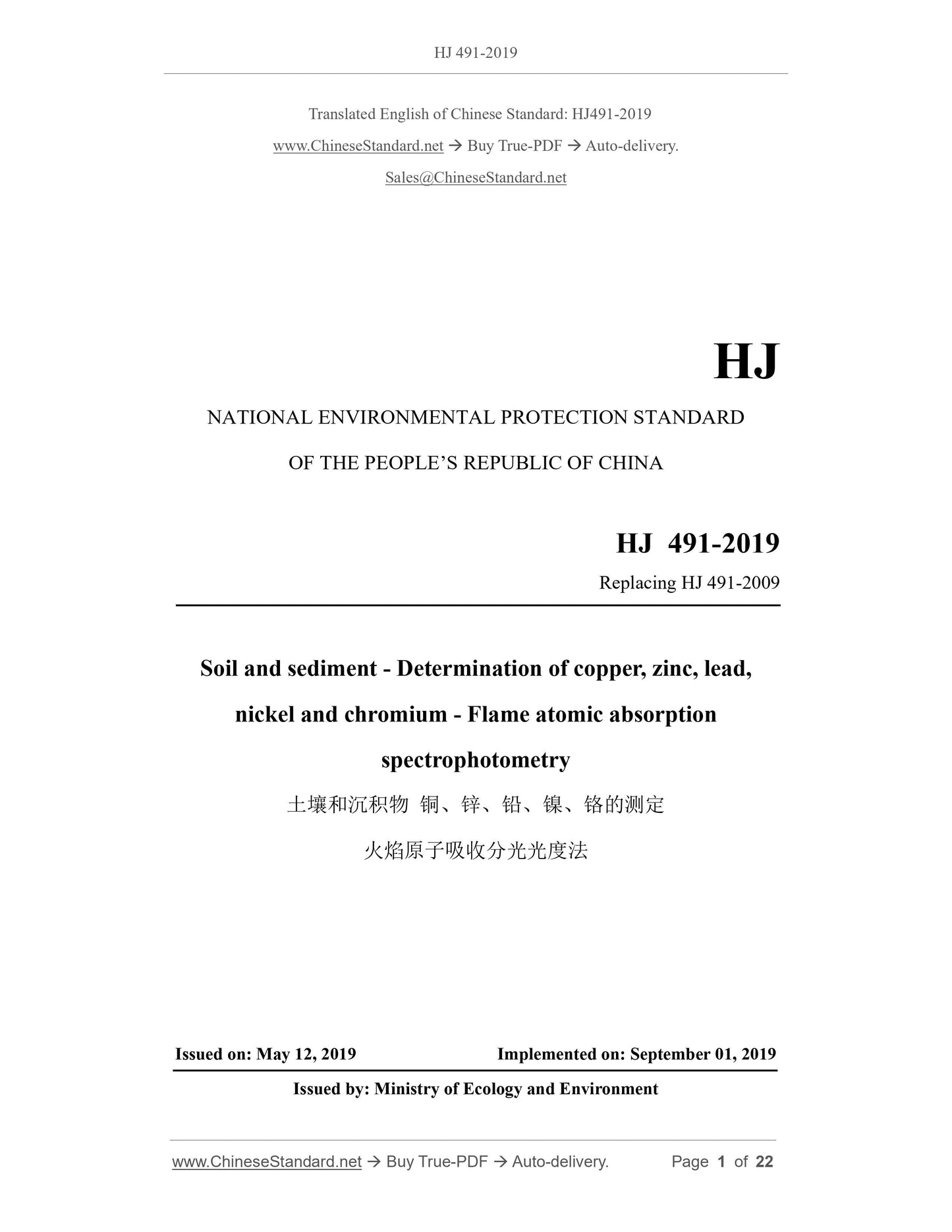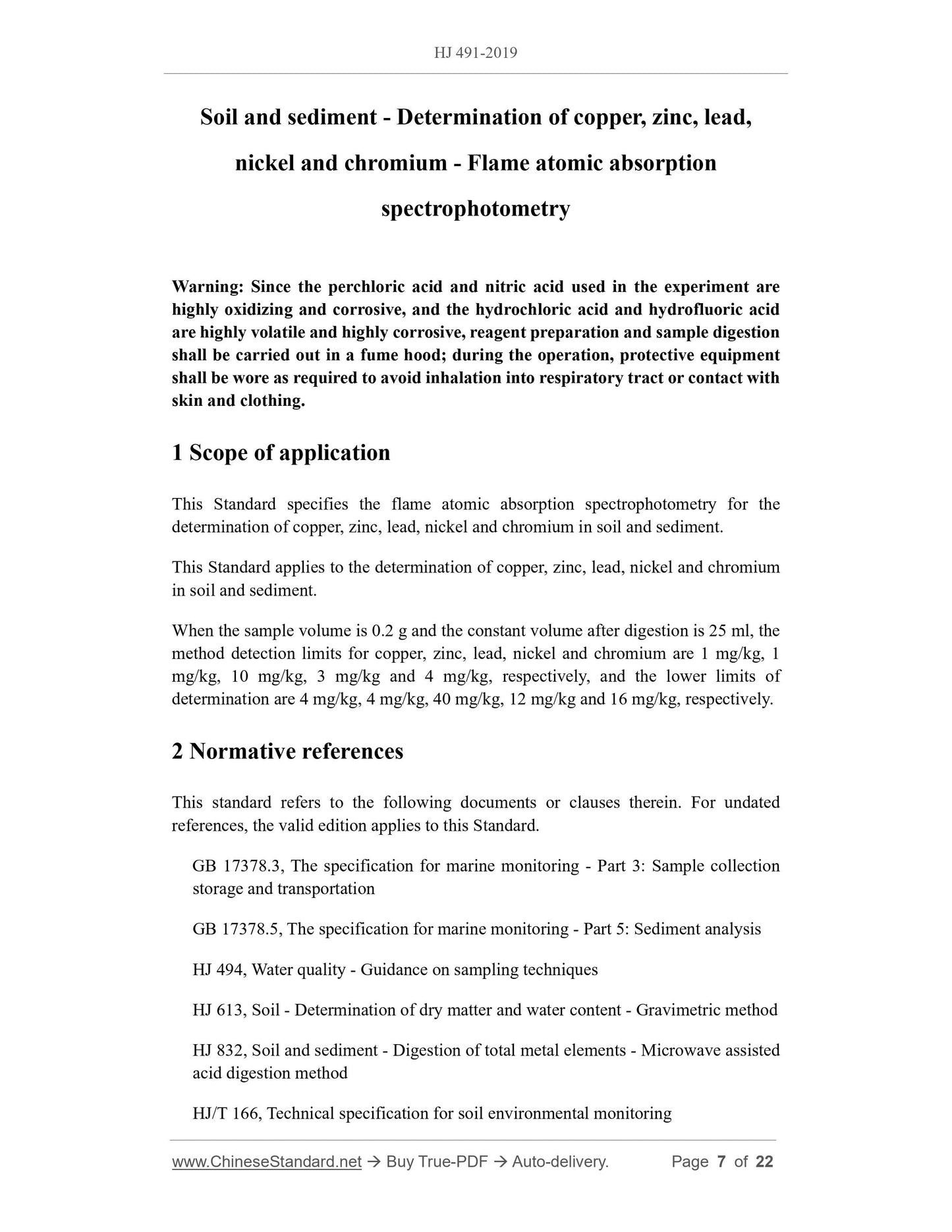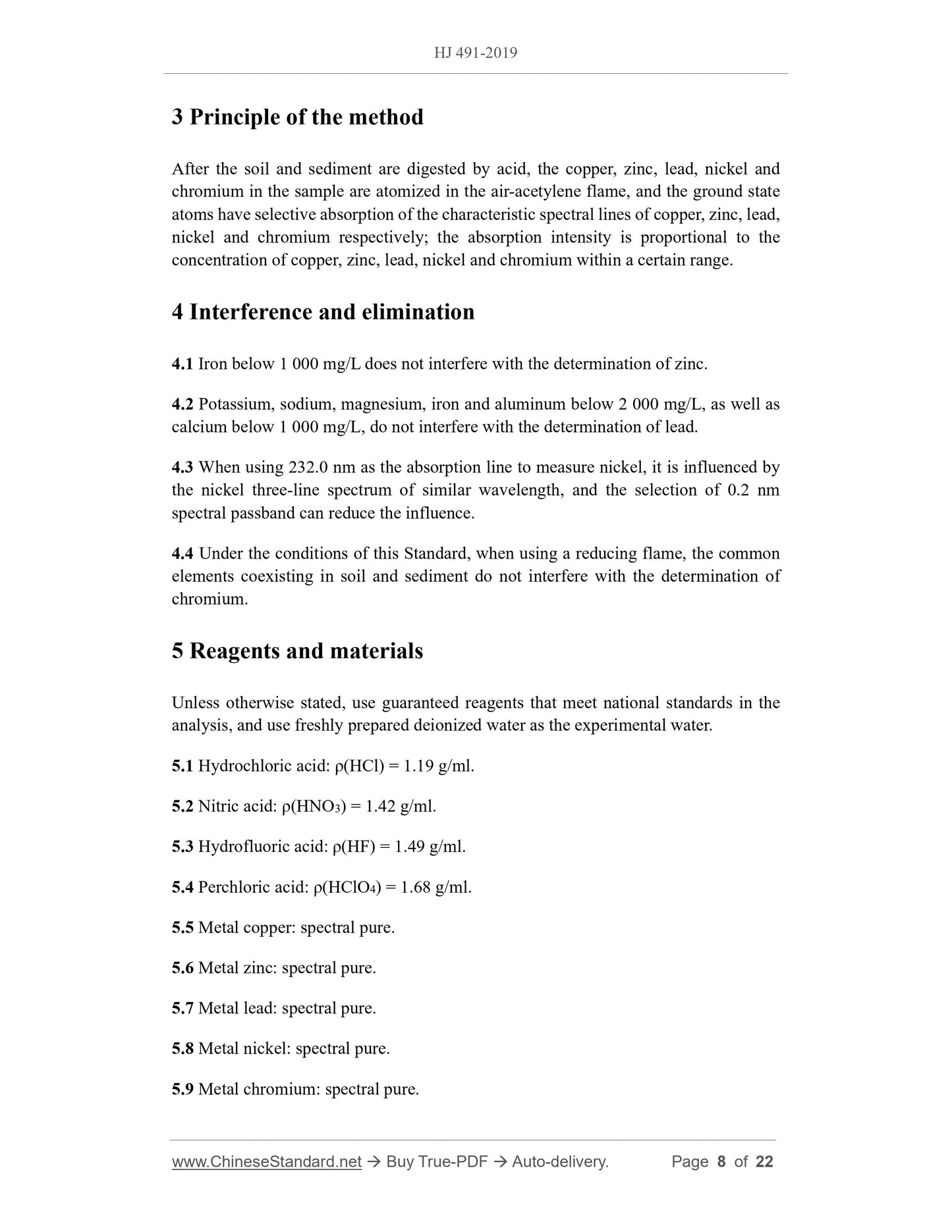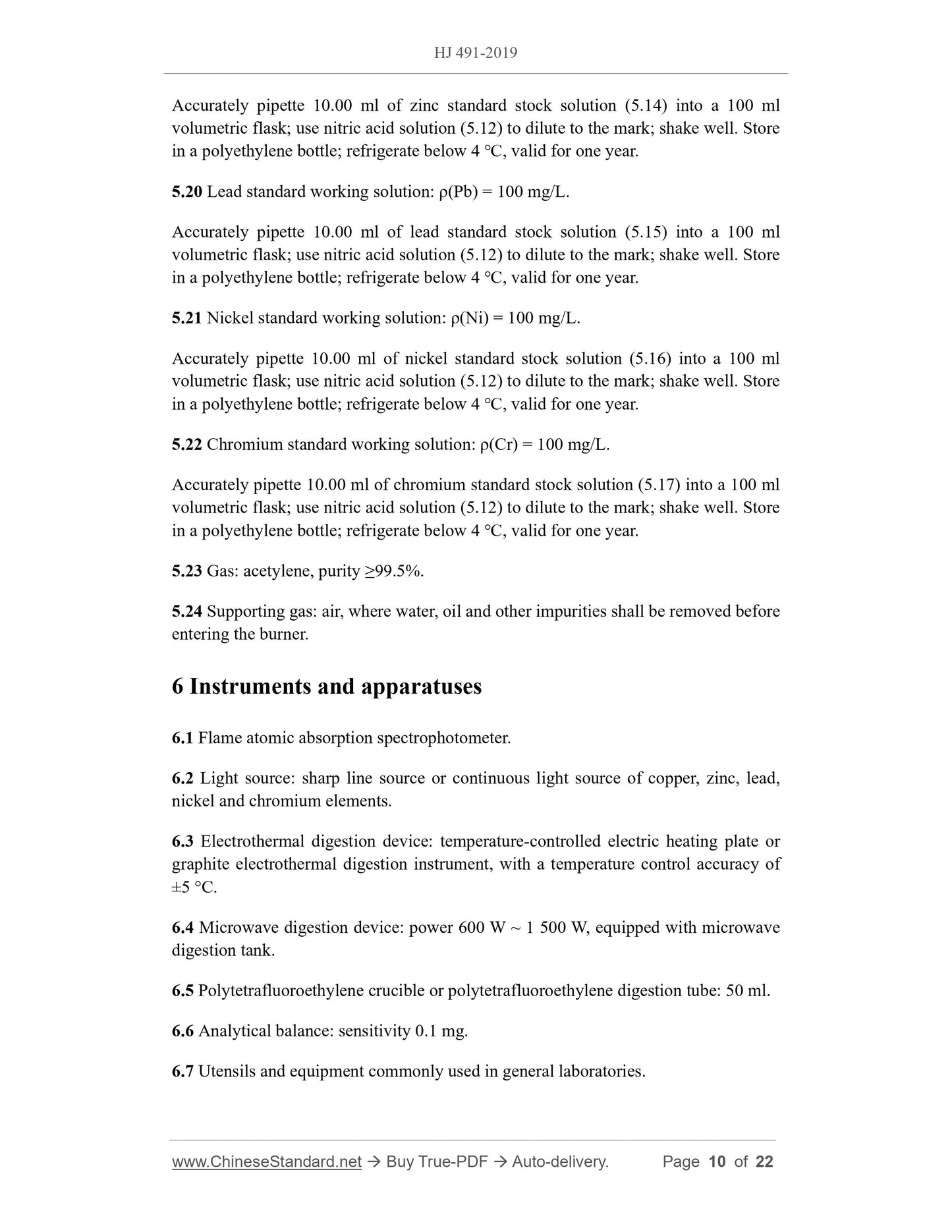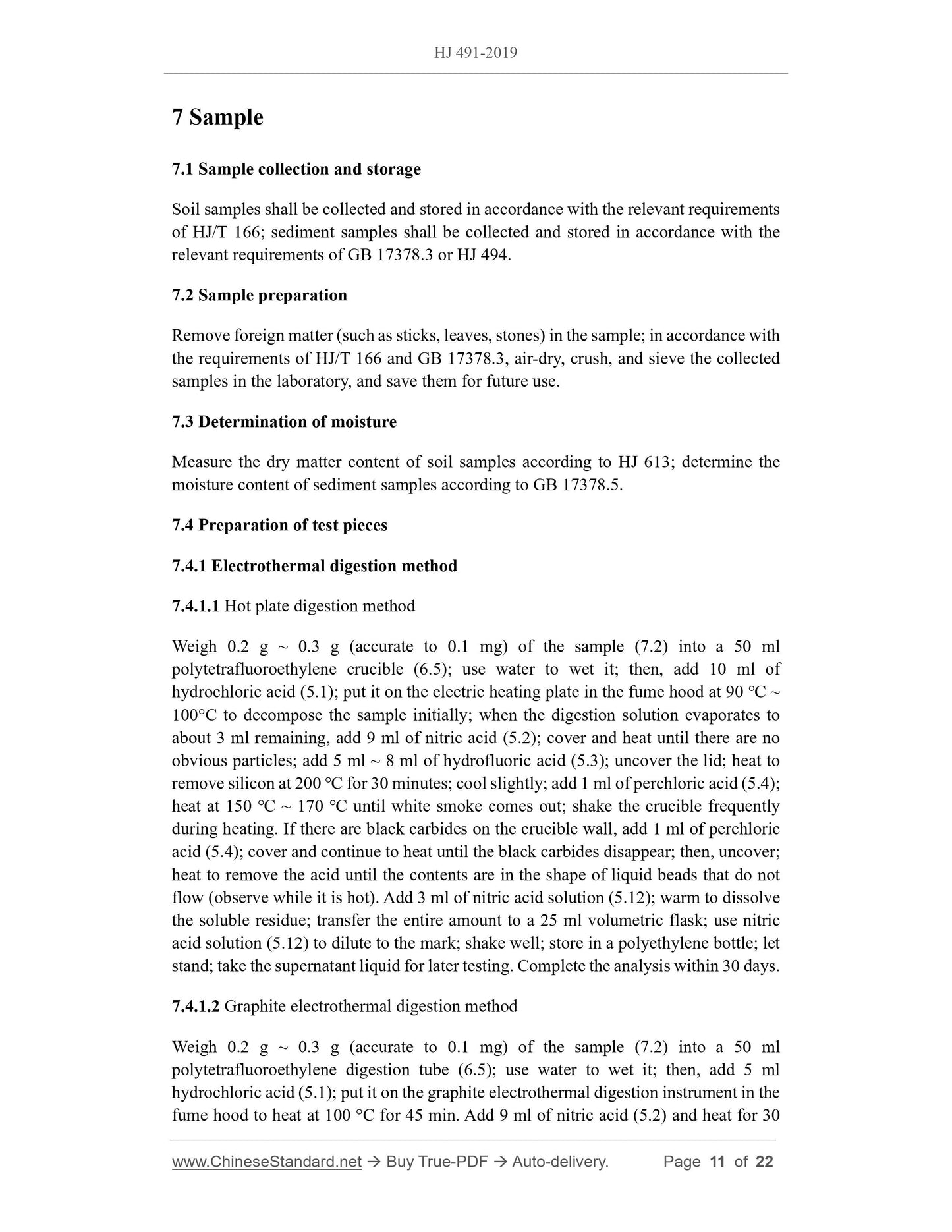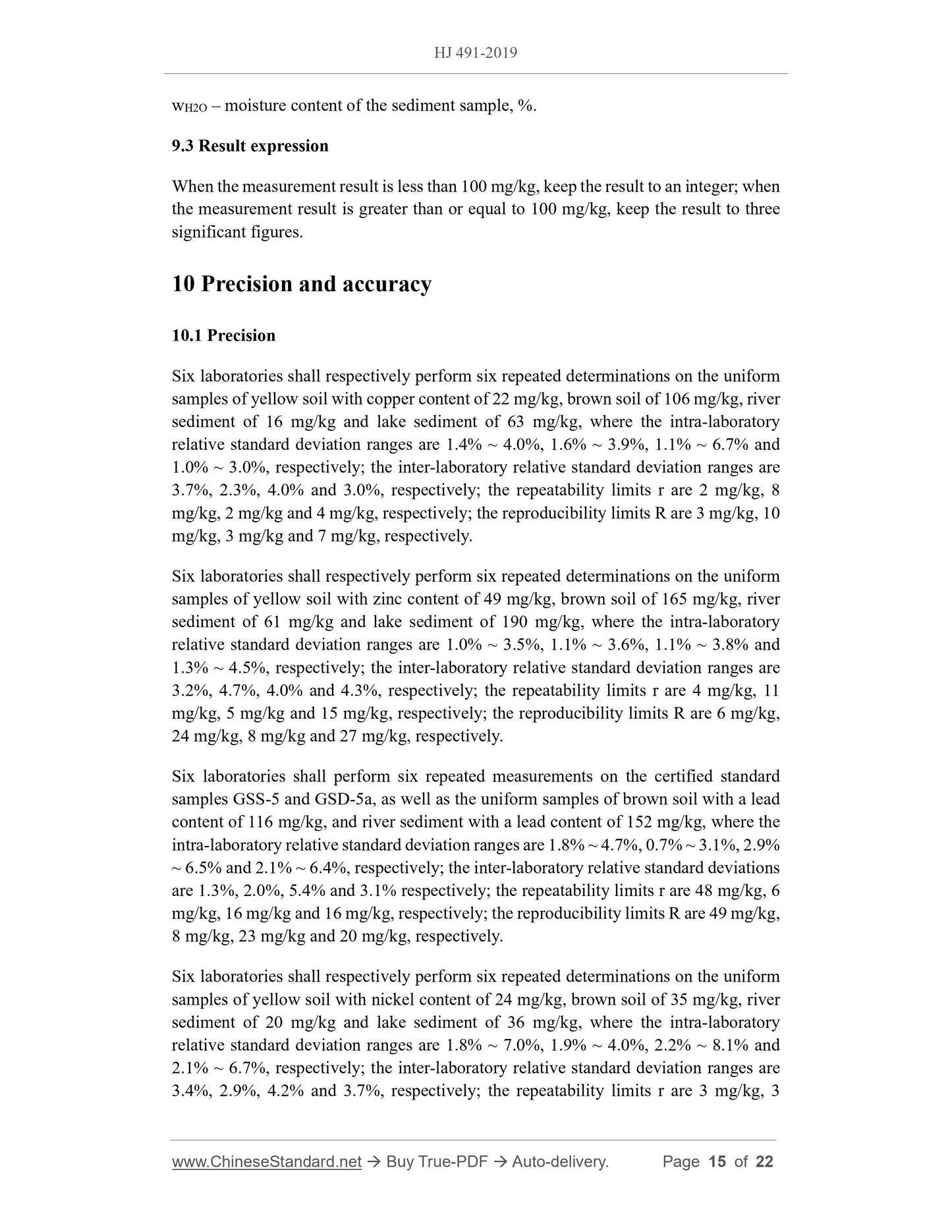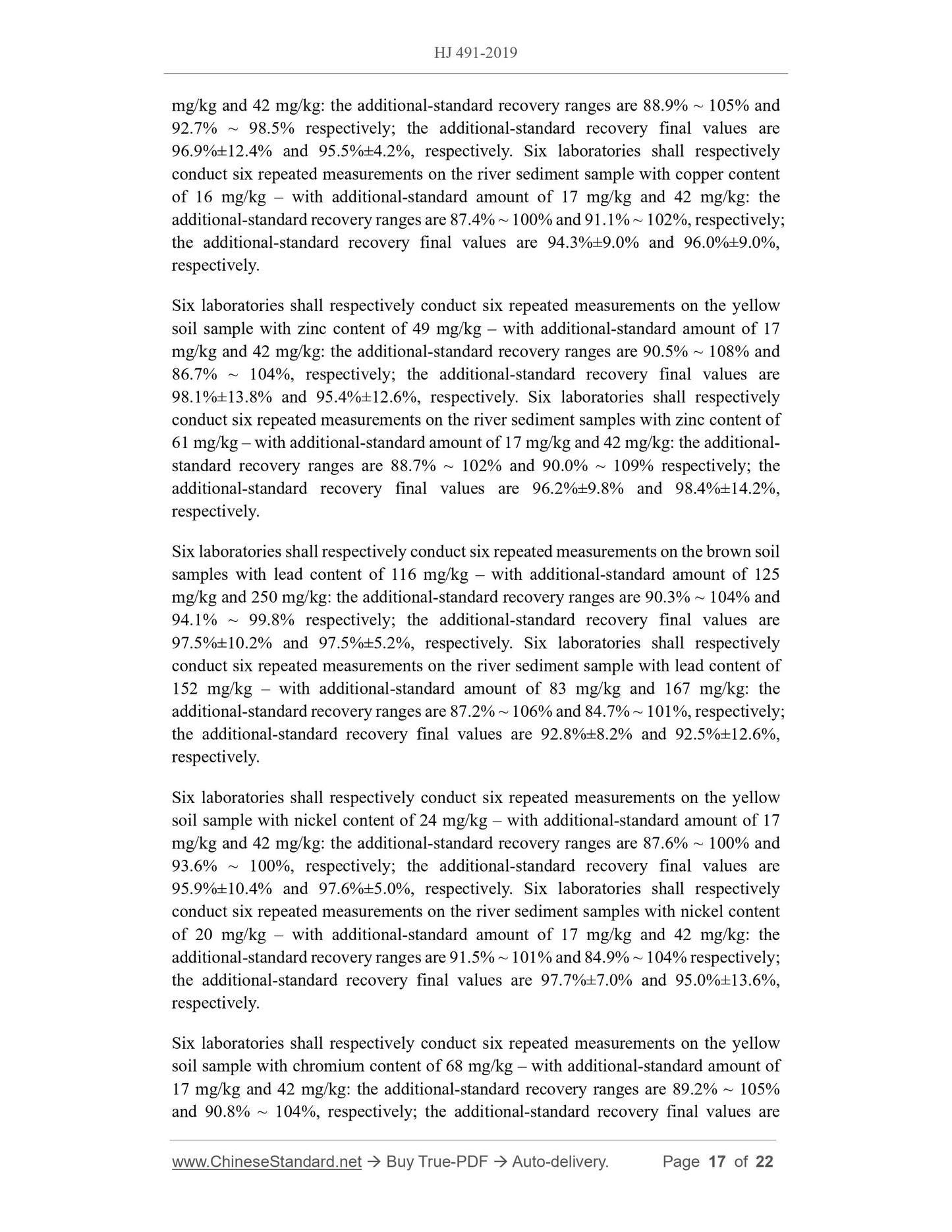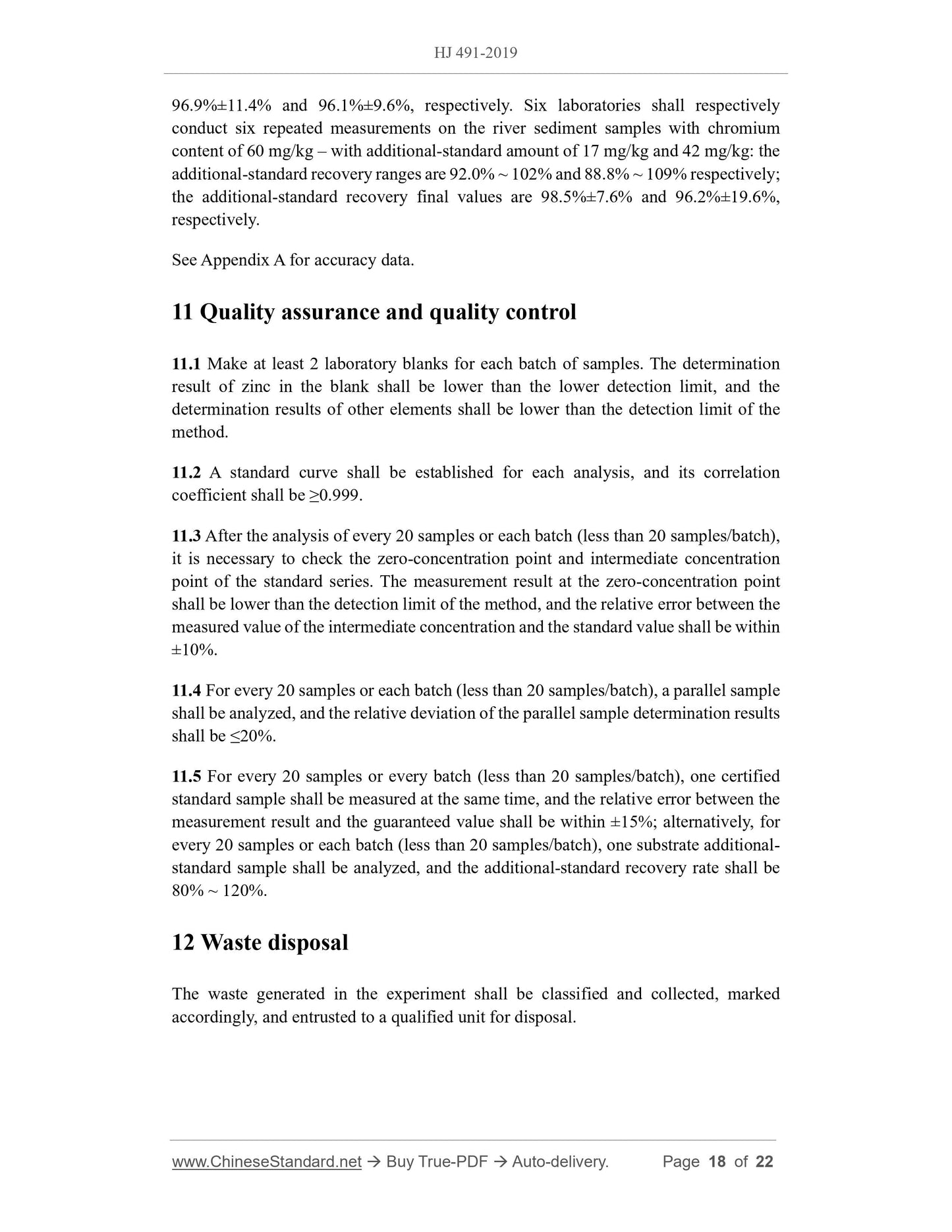1
/
of
8
www.ChineseStandard.us -- Field Test Asia Pte. Ltd.
HJ 491-2019 English PDF
HJ 491-2019 English PDF
Regular price
$275.00
Regular price
Sale price
$275.00
Unit price
/
per
Shipping calculated at checkout.
Couldn't load pickup availability
HJ 491-2019: Soil and sediment - Determination of copper, zinc, lead, nickel and chromium - Flame atomic absorption spectrophotometry
Delivery: 9 seconds. Download (and Email) true-PDF + Invoice.Get Quotation: Click HJ 491-2019 (Self-service in 1-minute)
Newer / historical versions: HJ 491-2019
Preview True-PDF
Scope
This Standard specifies the flame atomic absorption spectrophotometry for thedetermination of copper, zinc, lead, nickel and chromium in soil and sediment.
This Standard applies to the determination of copper, zinc, lead, nickel and chromium
in soil and sediment.
When the sample volume is 0.2 g and the constant volume after digestion is 25 ml, the
method detection limits for copper, zinc, lead, nickel and chromium are 1 mg/kg, 1
mg/kg, 10 mg/kg, 3 mg/kg and 4 mg/kg, respectively, and the lower limits of
determination are 4 mg/kg, 4 mg/kg, 40 mg/kg, 12 mg/kg and 16 mg/kg, respectively.
Basic Data
| Standard ID | HJ 491-2019 (HJ491-2019) |
| Description (Translated English) | Soil and sediment - Determination of copper, zinc, lead, nickel and chromium - Flame atomic absorption spectrophotometry |
| Sector / Industry | Environmental Protection Industry Standard |
| Classification of Chinese Standard | Z18 |
| Classification of International Standard | 13.080 |
| Word Count Estimation | 15,129 |
| Date of Issue | 2019 |
| Date of Implementation | 2019-09-01 |
| Issuing agency(ies) | Ministry of Ecology and Environment |
Share
